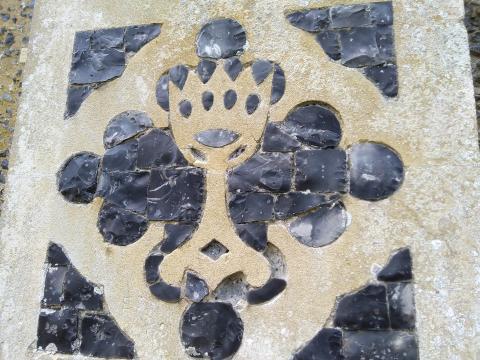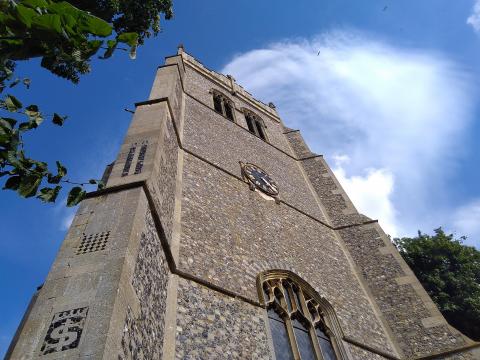Eye on the Chalice

Eye Church in Suffolk was sadly closed by the time I arrived late one August afternoon. It is a magnificent building, perhaps far too grand for so small a place, though the denizens of Eye may beg to differ. While denied entry within, I took my time to inspect it from without. In the flints which East Anglian church-builders are wont to attach to their churches’ walls, were a number of shapes, not least of which is the chalice. A chalice is a stylised and decorative cup used during communion. I notice one is sometimes produced for our own times of communion, but it must just be a show piece as we don’t actually use it. Here though, the chalice means so much more, seeing as it advertises ‘sung masses’ on its notice boards.
For Catholics, both Roman and Anglican, the chalice is the vessel which contains the Lord’s transubstantiated blood. For those unfamiliar with theological jargon, such worshippers reckon the communion wine to literally turn into Jesus’ blood; thus, the cup in which it is held is rather special. Much as I think a communion chalice is far more accurate and symbolically powerful than the little trays of miniature cups which we dissenters are fond of using, I dislike the ornate chalices of Catholicism. By considering the wine to become real blood, one is summoning to earth Christ’s physical presence, something that will not occur until His proper return. Similarly, the wine, which was designed to be a beautiful symbol of His atoning work, becomes itself an idolatrous substitute for the Spirit’s presence.
We’ll have no chalices carved into our walls, thank you.

- Log in to post comments


 Sunday Worship 10.45am & 6.00pm
Sunday Worship 10.45am & 6.00pm